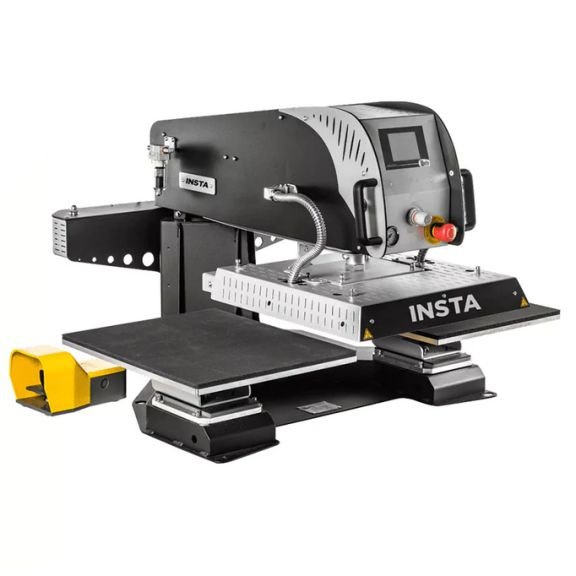The Future of Apparel Decoration: 4 Trends Reshaping the Industry in 2024
Quantity of One
The term "quantity of one" in the context of apparel decoration refers to the ability to produce or customize a single, unique item. The ability to achieve a quantity of one in apparel decoration is facilitated by advancements such as digital printing, direct-to-film (DTF) printing, and other on-demand customization processes. These technologies allow for the efficient production of small batches or even single pieces without the need for extensive setup processes that are common in traditional manufacturing methods.
Direct-to-Film Transfers
Direct-to-Film (DTF) transfers are a method of customizing apparel through a process that involves printing designs onto a special film and then transferring the design onto the fabric using heat. This method is well-suited for on-demand or small-quantity customization, including the concept of a "quantity of one." Some advantages of DTF transfers include:
Versatility: DTF transfers can be applied to various fabric types, offering flexibility in garment selection.
Full-Color Printing: DTF allows for high-quality, full-color prints, enabling detailed and vibrant designs.
Quick Turnaround: The process is relatively quick, making it suitable for on-demand or small-batch production.
Artificial Intelligence
Artificial Intelligence (AI) plays a significant role in various aspects of the apparel decoration industry, contributing to improved efficiency, customization, and overall innovation. Here are several ways in which AI is involved in apparel decoration:
Design Assistance: AI-powered design tools assist apparel decorators in creating unique and aesthetically pleasing designs. These tools may offer design suggestions, color palette recommendations, and even generate design variations based on user input.
Midjourney is a generative AI program and service that generates images from natural language descriptions or prompts.
Automated Workflows: AI helps automate various stages of the apparel decoration process, from order processing to design placement. Automated workflows improve efficiency, reduce errors, and enhance overall production speed.
Predictive Analytics: AI algorithms analyze historical data to make predictions about trends, demand, and consumer preferences. This information can be valuable for apparel decorators in making informed decisions about inventory, design choices, and production planning.
Customer Engagement: AI-powered chatbots and virtual assistants engage with customers, providing assistance, answering queries, and guiding them through the customization or ordering process. This enhances the customer experience and provides real-time support.
Using an AI-powered chatbot on your website offers users an elevated experience.
Technology Integration
Custom apparel companies have been leveraging technology for higher-quality print options as well as a more personalized customer experience. Here are some technologies that are gaining traction in the apparel decoration industry:
Digital Printing
Digital Hybrid Transfers: Using a combination of digital printing and traditional screen printing, this printing technology creates a product that offers superior versatility and durability while remaining a cost-effective option for full-color decoration.
Direct-to-Film (DTF) Transfers: The newest technology driven advancement, DTF makes full-color apparel decoration more cost-effective at small to medium sized runs with no minimum order requirements.
New advancements in digital printing are revolutionizing the custom apparel industry.
Smart Textiles
Conductive Inks: Enabling the incorporation of electronic components into textiles, these inks open up possibilities for smart clothing with features like integrated sensors or LED lights.
RFID Tags: This technology can be integrated into garments for inventory management, anti-counterfeiting measures, and enhanced supply chain visibility.
Automation
Heat Press Features: Invest in heat press machines that come with automation features. Some advanced heat presses have programmable settings, digital controls, and automated pressure adjustment, allowing for precise and consistent heat application.
Automatic Heat Press: Consider using automatic heat press machines that can perform tasks such as opening and closing, releasing the garment, and adjusting pressure automatically. These machines can increase production speed and reduce the need for manual intervention.
For high-volume decorating, we suggest a high-quality heat press machine with automation features such as the Insta 728 Heat Press or Insta 780 Dual Shuttle Heat Press.
Sustainability
The fashion industry as a whole has been moving towards more sustainable and eco-friendly practices. This includes the use of organic and recycled materials, environmentally friendly production processes, and a focus on reducing waste. Apparel decorators can adopt various sustainable practices to minimize their environmental impact. Here are several ways in which they can contribute to sustainability:
Sustainable Materials
Opt for organic and recycled materials for garments. This includes organic cotton, recycled polyester, and other sustainable fabric options.
Many new transfer options like colorVIBE Hybrid and colorVIBE DTF are made using a recyclable PET film.
Explore alternatives such as Tencel, hemp, and bamboo, which are known for their eco-friendly properties.
Energy Efficient
Upgrade to energy-efficient equipment and machinery to reduce energy consumption.
Utilize renewable energy sources, such as solar or wind power, where feasible.
Eco-Friendly Printing
Choose environmentally friendly printing methods, such as water-based or eco-solvent inks, which have fewer harmful chemicals.
Consider digitally printed transfers or direct-to-garment printing, as they typically generate less waste than traditional methods like screen printing.





